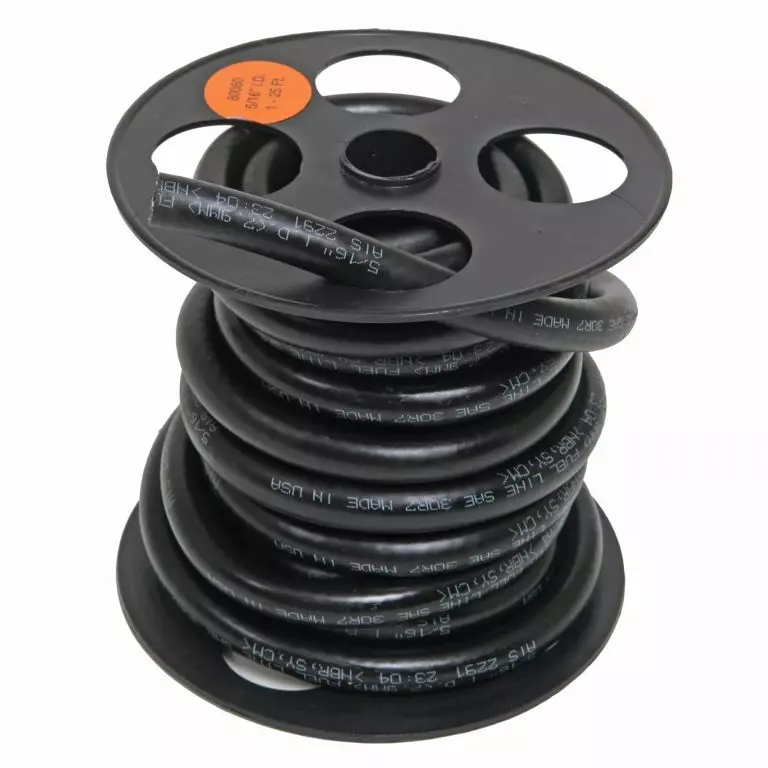335345435
Aug . 15, 2024 05:09 Back to list
High-Quality SAE100R1AT Hydraulic Hose Production for Reliable Performance in Various Applications
Understanding SAE 100R1AT A Comprehensive Overview
SAE 100R1AT is a crucial hydraulic hose standard that plays an essential role in various industrial applications. This standard, established by the Society of Automotive Engineers (SAE), defines the specifications for high-pressure hydraulic hoses used in construction equipment, agriculture, and numerous other fields. Understanding the features, benefits, and manufacturing processes of SAE 100R1AT hoses is vital for professionals in areas that depend on hydraulic systems.
Specifications and Features
SAE 100R1AT hoses are designed to handle high-pressure applications effectively. These hoses are typically constructed with a single steel wire braid reinforcement, which gives them superior strength and flexibility. The inner tube is made from oil-resistant synthetic rubber that prevents leaks and degradation from hydraulic fluids. The outer cover, also made of synthetic rubber, provides protection against environmental factors such as abrasion, ozone, and weather conditions.
These hoses are rated for pressure capabilities that can range up to 3,000 psi, making them suitable for various hydraulic systems. The temperature range of SAE 100R1AT hoses usually spans from -40°F to +212°F (-40°C to +100°C), allowing for use in extreme conditions. This versatility ensures that they can be deployed in different environments, including hot, cold, wet, and dry locations.
Applications
The applications of SAE 100R1AT hoses are extensive. They are commonly utilized in machinery and equipment that require hydraulic power, including excavators, loaders, forklifts, and agricultural machinery. These hoses allow fluid to transfer efficiently, facilitating the operation of hydraulic cylinders, motors, and other components within a hydraulic system.
sae100r1at factory

Additionally, SAE 100R1AT hoses are used in various industries such as manufacturing, oil and gas, and construction. In the oil and gas sector, they are indispensable for moving drilling fluids, while in construction, they are fundamental for providing the necessary power for heavy machinery.
Manufacturing Process
The manufacturing of SAE 100R1AT hoses requires precision and adherence to stringent quality control measures. The process begins with selecting high-quality raw materials, including high-strength steel wires and synthetic rubber compounds. These materials undergo rigorous testing to ensure they meet the necessary industry standards.
Once the materials are confirmed, the fabrication process begins. The inner tube is extruded and then reinforced with steel wire to bolster the hose's strength. After this, an outer layer of rubber is added for protection. The hoses undergo a series of tests that assess their pressure resistance, flexibility, and durability before they can be certified as SAE 100R1AT compliant.
Quality assurance is a critical element in the production of these hoses. Manufacturers often conduct hydrostatic testing, where hoses are filled with water and subjected to high pressure to check for leaks and weaknesses. This testing guarantees that the hoses can withstand the pressures they will encounter in real-world applications.
Conclusion
In summary, SAE 100R1AT hoses are indispensable components in hydraulic systems across various industries. Their robust construction, high-pressure capability, and flexibility make them suitable for a broad range of applications. Understanding their specifications and manufacturing processes ensures that professionals can select the right hoses for their specific needs. As technology continues to evolve, the development of these hoses will advance as well, offering even better performance and durability for hydraulic applications in the future.
-
SAE 100 R17 Black Smooth Cover Hydraulic Hose
NewsMar.07,2025
-
SAE 100 R17 Black Smooth Cover Hydraulic Hose
NewsMar.07,2025
-
SAE 100 R17 Black Smooth Cover Hydraulic Hose
NewsMar.07,2025
-
SAE 100 R17 Black Smooth Cover Hydraulic Hose
NewsMar.07,2025
-
SAE 100 R17 Black Smooth Cover Hydraulic Hose
NewsMar.07,2025
-
steel wire braided hydraulic hose
NewsMar.07,2025



